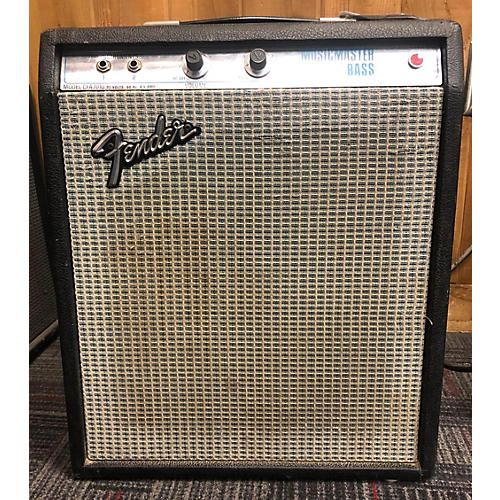

This is because they guarantee you get an awesome tone and long life and they don’t cost a fortune.

We always recommend JJ valves for this amplifier. A brand new set of valves will get your amp sounding like new again. Over time your valves will lose their tone and their power. Any questions just get in touch and we can help. These are much smaller than the 6V6S valve so you need to check your amp before you order. Note, some versions of this amp use 6AQ5 power valves. 2 x 6V6S matched power valves/power tubes.1 x ECC83 (also called 12AX7) preamp valve.The Fender Musicmaster Silverface bass 1§2W amplifier uses: Throw a tube reverb (or analog delay), some sort of "swirly" pedal and Bad Horse "Klon clone" in front, crank the amp and turn the guitar down, use the guitar controls to "drive" the amp and you probably don't need anything else! It's a great fit for the "use the smallest amp possible and the guitar as the drive control" method I've used for over 40 years.Valves for Fender Musicmaster Silverface Bass Great "sleeper" amp buys, and tremendous for small clubs or mic'd situations. But run at the upper edge of headroom (with a good speaker!) with a Tele, Strat or even Les Paul most players can't pick out one from the other. If you have a lot of experience with wide-panels you'll hear the difference, and the 5E3's gain structure is different, especially at higher volume levels. I've run it head-to-head with my '55 5D3, a '54 5D3 and a (I think) '58 5E3. I left the input cap - it sounds closed to my original 5D3 with it that without. I'll probably order something better for him. I had it just about long enough to "dial in" - which is typically what happens with about half my gear acquisitions!3 He uses it with a Les Paul Standard and gets a blistering rock tone with it, even with the mediocre speaker. The schematic and description should be plenty to use for reference.Īfter we lost our youngest son (who was using it at home) my oldest bagged it. All that was done was replacing caps and power cord. Sorry, I missed the post from almost a year ago requesting an "after" view. Not bad for roughly a $300 total investment. It's also far more useful for bass as a studio amp than one in stock form. This amp is cathode biased but sounds completely different from Vox-like designs. 6AQ5's in the right circuit sound very similar to 6V6's and 6BQ5/EL84's. It's much like my '55 5D3 Deluxe tone-wise but tighter. Tested the coupling and bypass caps - the cheap disc coupling cap was bad and the power tube bypass cap was bad as well (I rarely find bad bypass caps in preamps).Īfter parts replacement and then removing the input cap and a switch to a different coupling cap (that passes more lows) it sounds great with both guitar and bass. I first replaced the 3 filter caps (the orange one is a dual cap) and speaker and ran a quick sound test- it sounded awful, with ragged, nasty distortion. The advantage is that the phase inverter almost never goes out of balance, unlike the usual tube type where tube balance is extremely important. These early ones are unusual in that they are the only Fender amp to have 6AQ5 power tubes - which also require unusual 7 pin sockets.Īnd all Musicmaster Bass amps have an expensive phase inverter - a transformer instead of a 12A*7 tube.

Speaker was blown, but I always replace them anyway - the stock ones are awful. It's a 1970 and had never been touched except for one very weird, long bolt on the output transformer. This is what one looks like before any servicing (except the back view, just after I changed the speaker - tried an old P12Q but liked this "vanilla" Eminence better, oddly).


 0 kommentar(er)
0 kommentar(er)
